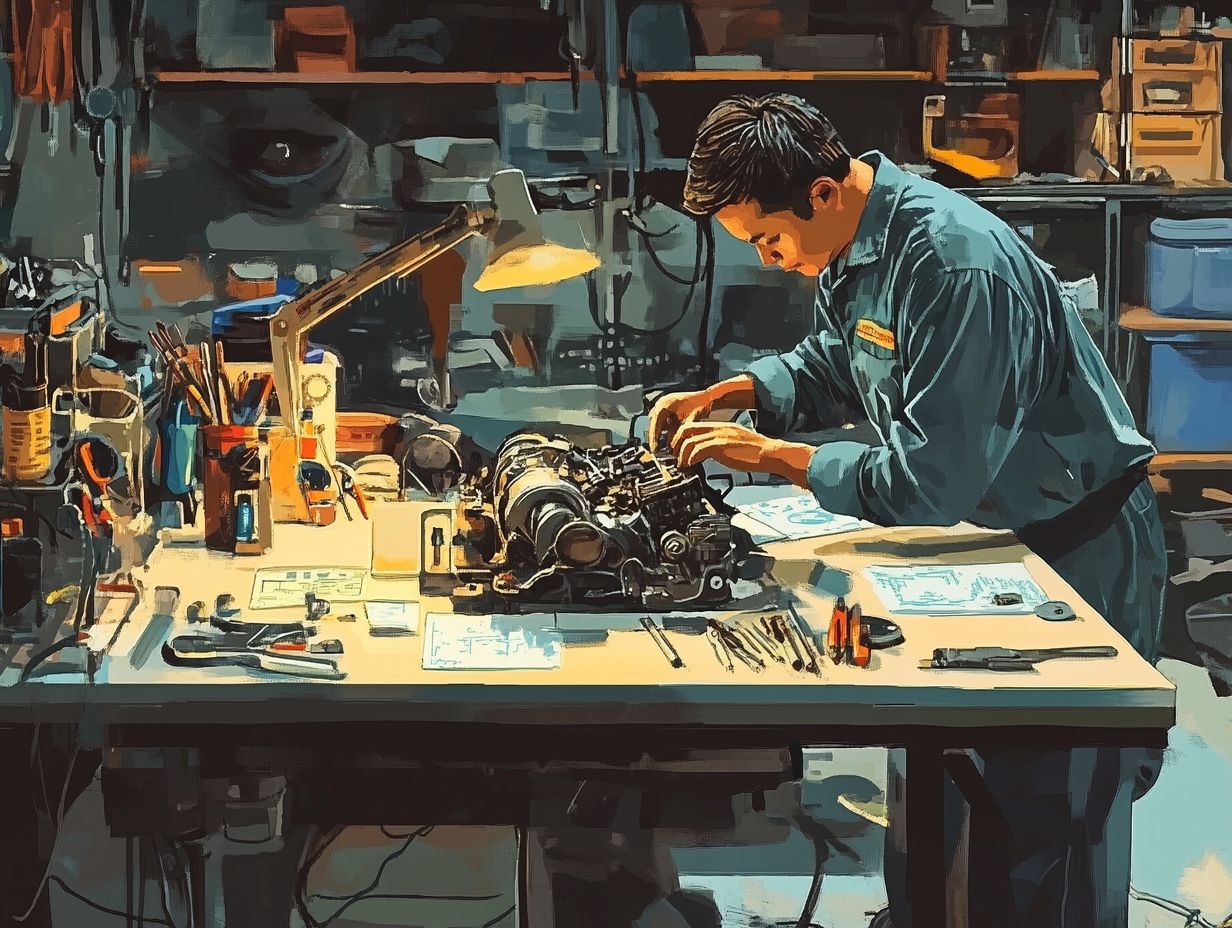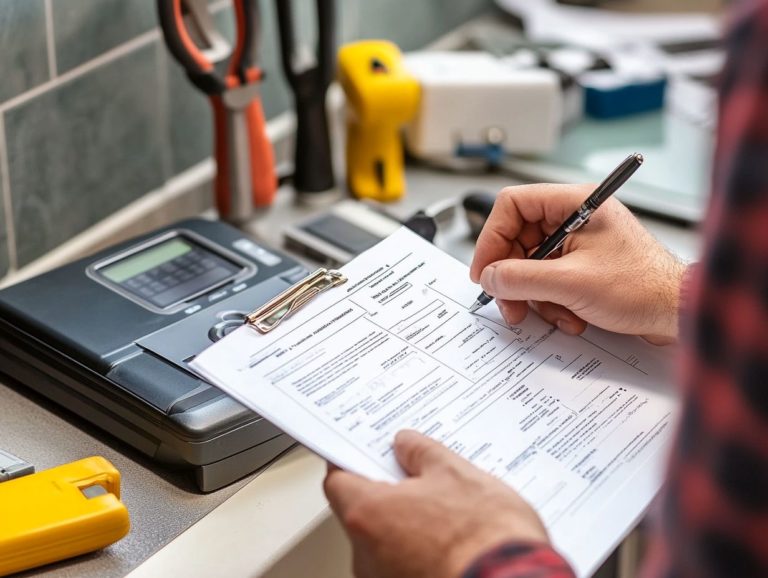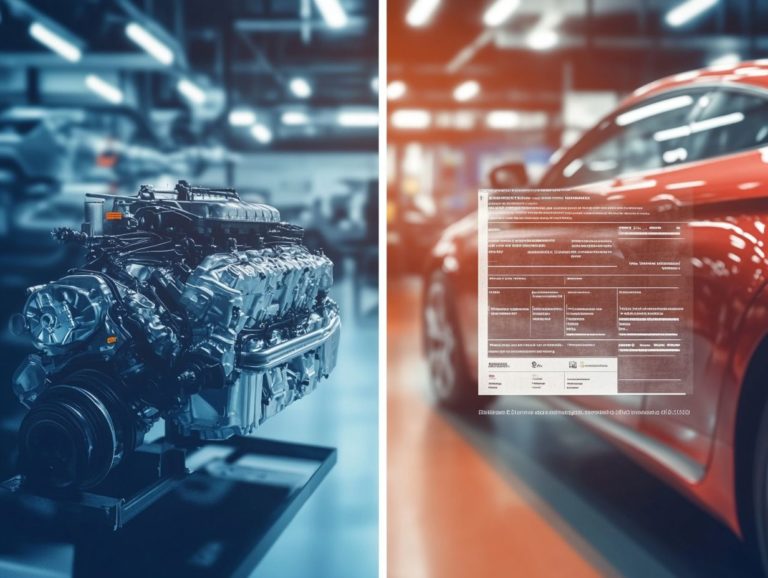How to Recognize Transmission Problems
Transmission troubles can turn your day upside down! Understanding the inner workings of your transmission is the crucial first step in spotting early signs of trouble. By familiarizing yourself with common warning indicators and more serious concerns, you can save both time and money down the road.
This article delves into the various causes of transmission problems, diagnostic techniques, and repair options, all designed to help you keep your vehicle running smoothly and efficiently.
Contents
Key Takeaways:

- Watch for early signs like strange noises or delayed shifting.
- Regular maintenance can prevent issues from low fluid levels or dirty filters.
- Use proper tools and methods to diagnose and fix transmission problems accurately.
Understanding Transmission Problems
Grasping the nuances of transmission issues is important for preserving your vehicle s performance and extending its lifespan. The transmission be it automatic or manual is key in transferring power from the engine to the wheels, facilitating smooth gear shifts and overall efficiency.
In Madison, diverse conditions can greatly affect vehicle upkeep. Identifying transmission problems early can spare you from expensive repairs and unforeseen mechanical breakdowns. By routinely checking transmission fluid levels and staying vigilant for signs of trouble, you can take proactive measures during vehicle inspections.
What is a Transmission and How Does it Work?
A vehicle’s transmission is an essential component that plays an important role in transferring power from the engine to the wheels. This significantly impacts how your car accelerates and handles on the road. Whether you opt for an automatic or manual transmission, each system uses distinct ways to help your car speed up and change gears effectively.
The transmission is crucial in determining your vehicle’s efficiency and responsiveness. It influences everything from fuel consumption to your overall driving experience. An automatic transmission uses hydraulic systems and electronic controls to shift gears easily, providing a more relaxed driving experience, especially in heavy traffic.
A manual transmission requires you to actively engage with the vehicle. This fosters a more hands-on connection to your car’s performance. It can also lead to improved power management, particularly in performance-oriented situations. Understanding these differences can significantly influence your vehicle choice and driving style.
Common Signs of Transmission Problems
Recognizing the common signs of transmission issues is essential for preventing further damage and ensuring your safety on the road. You should remain vigilant for symptoms like slipping gears, erratic shifting, unusual noises from the transmission area, and any burning smells or fluid leaks.
Ignoring these signs can lead to severe damage, so stay alert!
Identifying Early Warning Signs

Identifying early warning signs of transmission issues can save you from costly repairs and enhance your vehicle’s safety. Watch for key indicators like the check engine light, gears slipping during acceleration, and any unusual sounds when shifting gears.
Monitoring these signs is essential for effective vehicle maintenance. They often hint at deeper mechanical problems. If the check engine light activates, grab an OBD-II scanner a tool that helps diagnose vehicle issues to identify the underlying problem.
Slipping gears indicate a lack of proper engagement between components. Inspect your transmission fluid level to ensure it’s within the recommended range.
Check fluid levels regularly and perform diagnostic scans to catch leaks or contamination before they escalate. This proactive approach saves time and money while enhancing the lifespan of your vehicle s transmission system.
Recognizing More Serious Issues
Serious transmission problems can lead to breakdowns that compromise your vehicle’s performance and the safety of everyone on board. Recognizing signs like engine overheating, torque converter issues, and abnormal shifts allows you to address these challenges before they escalate.
Ignoring these warning signals risks more extensive damage, potentially leading to costly repairs or a complete transmission replacement. Neglecting these issues increases the chances of accidents due to compromised drivability.
Make regular maintenance your top priority and consult a qualified technician. They can assess your vehicle, diagnose issues, and perform necessary repairs. Early intervention is vital to ensure your vehicle’s longevity and the safety of its passengers.
Causes of Transmission Problems
Understanding the causes of transmission problems is vital for maintaining your vehicle s performance. Factors like the type of fluid used, the condition of the clutch, and the quality of hydraulic oil play crucial roles in the health of your transmission system.
Regular inspections and diligent upkeep are essential for keeping your vehicle running smoothly.
Common Culprits and How to Prevent Them
Common causes of transmission problems include low or contaminated transmission fluid and fluid leaks. These issues can cause major problems if left unchecked. Safeguard against them with regular vehicle servicing in Madison and prompt transmission repairs.
Routine maintenance is key to avoiding these pitfalls. Check and change your transmission fluid regularly to lubricate gears and components, preventing premature wear. Stay vigilant for signs of leaks to avoid extensive repairs.
Engaging qualified technicians in Madison provides expert care and peace of mind, ensuring all services are performed correctly and efficiently.
Diagnosing Transmission Problems

Accurately diagnosing transmission problems is essential for effective repairs and maintaining your vehicle’s performance. By using a diagnostic scan, technicians can identify issues within the transmission components.
This detailed insight highlights potential failures and outlines necessary repairs during a thorough vehicle inspection.
Diagnostic Techniques and Tools
You can employ various diagnostic techniques and tools to effectively pinpoint transmission symptoms. A diagnostic scan, typically carried out by a certified mechanic, reveals valuable insights from your vehicle’s computer module, helping to identify any underlying issues during a thorough inspection.
This process may involve specialized equipment like pressure gauges and oscilloscopes an instrument used to view electronic signals to assess hydraulic fluid levels and electronic signals. Technicians meticulously analyze these outputs to interpret irregularities that can indicate specific malfunctions or issues related to the transmission system.
Understanding various transmission symptoms such as slipping, unusual noises, or fluid leaks is crucial for efficient repair efforts.
By correlating scan results with these symptoms, you can make informed decisions that address current issues and help prevent future complications.
Tackle Transmission Issues Head-On!
Addressing transmission problems without delay is crucial for upholding both vehicle safety and performance. The complexity and cost of transmission repair can differ significantly based on the severity of the issue.
Engaging a certified mechanic is essential to guarantee proper maintenance and achieve successful results.
Options for Repair and Maintenance
In terms of repairing transmission problems, you have several options depending on the severity of the issue and your vehicle’s specific needs. Embracing maintenance practices, such as routine checks and timely repairs by a certified mechanic, can significantly extend the lifespan of your transmission parts and help you avoid more significant issues down the line.
For instance, if you’re dealing with minor leaks or worn-out seals, a simple repair may be all that’s needed, allowing you to sidestep the costly alternative of a full transmission replacement.
However, when you encounter slipping gears or grinding noises, it s essential to weigh the benefits of replacing major components against the option of a complete overhaul.
Taking a proactive approach to ongoing vehicle maintenance not only ensures the smooth operation of your transmission but also enhances your vehicle’s overall performance and safety.
By committing to regular fluid changes and inspections, you can catch potential problems early, keeping your vehicle reliable on the road for years to come.
Frequently Asked Questions

What are the signs of transmission problems?
- Difficulty shifting gears
- Slipping or jerking while driving
- Strange noises coming from the transmission
How can I tell if my transmission is failing?
If your transmission is failing, you may notice a burning smell, leaks under your vehicle, or a delay in movement when shifting gears. You may also notice the check engine light turning on.
What causes transmission problems?
Transmission problems can be caused by a variety of issues, such as low fluid levels, worn or damaged gears, and faulty solenoids. Improper maintenance and driving habits can also contribute to transmission issues.
Do different types of transmissions have different warning signs?
Yes, the signs of transmission problems can vary depending on the type of transmission in your vehicle. For example, a manual transmission may have a slipping clutch or difficulty shifting gears, while an automatic transmission may experience delayed or rough shifts.
Is it safe to drive with transmission problems?
In general, it is not recommended to drive with transmission problems as it can cause further damage to your vehicle and potentially put you in a dangerous situation if the transmission fails while driving. Don’t wait! Get your vehicle checked immediately to avoid further damage.
What should I do if I suspect I have transmission problems?
If you suspect you have transmission problems, act now! Have your vehicle inspected by a trusted mechanic. They will be able to diagnose the issue and provide recommendations for repairs or replacements. It is not recommended to try and fix transmission problems on your own as it is a complex and delicate component of your vehicle.






